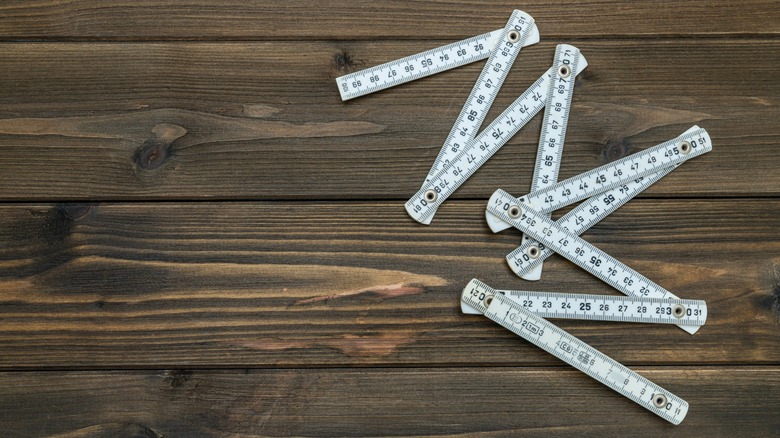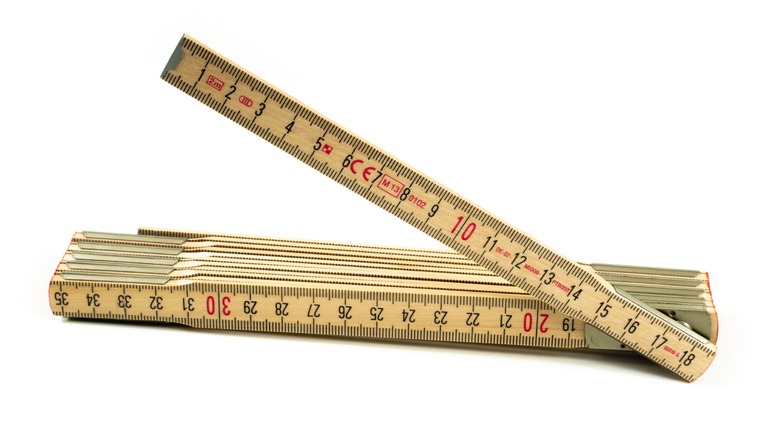The Old-School Measuring Tool That Deserves A Spot In Your Toolbox
The world has come quite some way from simple, mechanical measuring instruments. Nowadays, our devices, from iOS to Android, have some of the best measurement apps. Since they arrived on the scene, craftsmen and builders have had a choice to make. The innovation and ease of a digital measuring tool against the good old reliable ones that can measure everything from the width of a wall to the depth of a mortise.
When you think of old school measuring tools, you might picture straight wooden rulers, calipers, spirit levels, and folding rules. They all shared two qualities. The first being a dependence on the user's eye and steady hand. The other was that they were built to last. Many craftsmen formed a bond with rulers and squares that had logged decades of daily use yet still measured accurately.
One measuring tool from the past that quietly retains its relevance today is the folding rule. Its clever design links short, rigid segments with small metal hinges. It combines the length of a longer ruler with the portability of a small stick. So, when folded up, it fits into a pocket or pouch, which is very handy for a handyman. While the tape measure often steals the spotlight, the folding rule can be considered an essential bit of kit for your toolbox.
Why a folding rule outshines a tape measure
Even if you use a tape measure like a pro, there is potential upside to switching to the folding rule. One is that it beats out the tape measure when it comes to rigidity and, consequently, precision. Each hinged segment snaps firmly into place, no matter what you're measuring. It is stable and does not flop or bend mid‑measurement. It is also great for one‑handed use, unlike a tape measure that often requires two hands. You can simply press both ends against the surface, so it holds there and frees up your hands. This will be helpful when you want to take and scribble measurements in one go.
The folding rule is also the ideal choice for projects that involve measuring inside tight spots. This is because it often comes with a small slide rule attachment or end‑hook that holds at one end while allowing you to read the full depth from the opposite end. This is also useful for projects that involve checking layouts on uneven surfaces. There's also a helpful hack for using your rule to mark parallel lines without extra tools. You can do this by folding the rule into a Z‑shape so the two opposing segments rest on the workpiece. This setup gives you a built‑in parallel‑line guide for drawing consistent layout marks on boards or walls.

